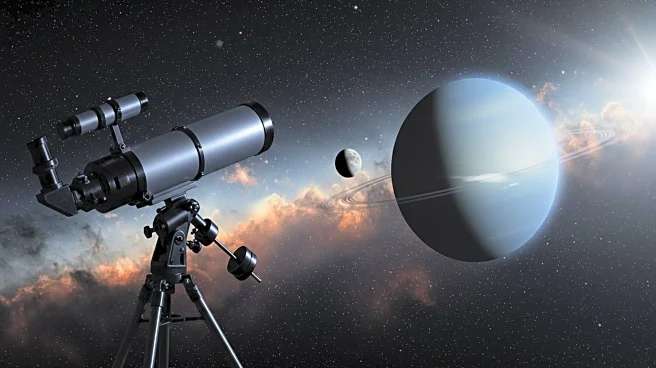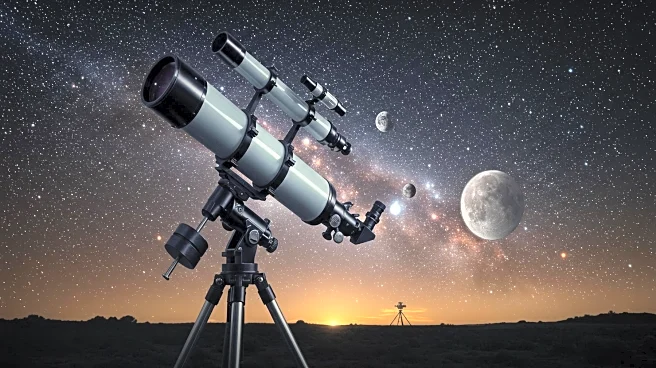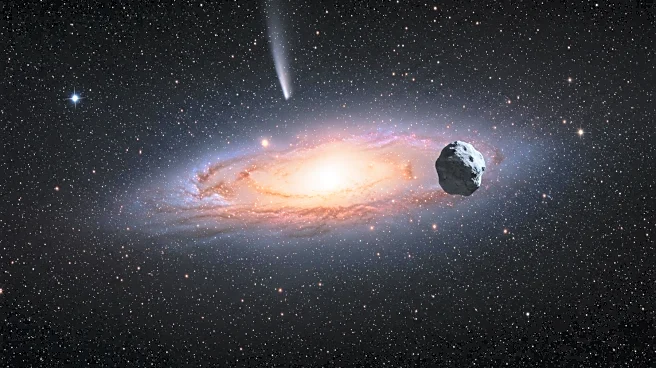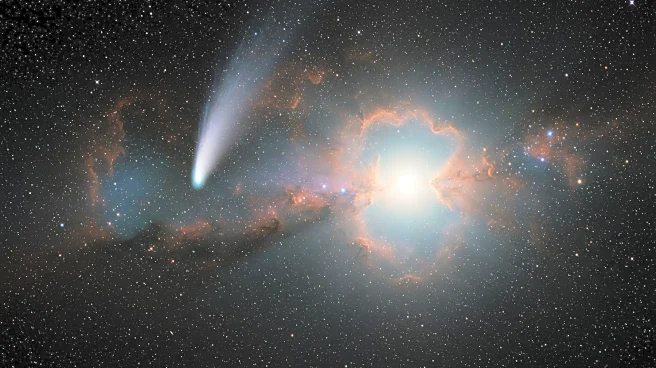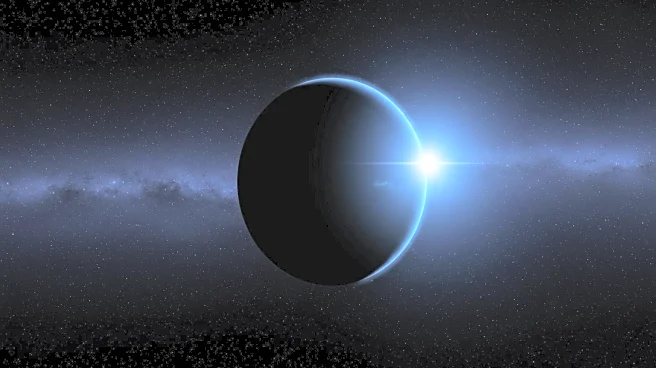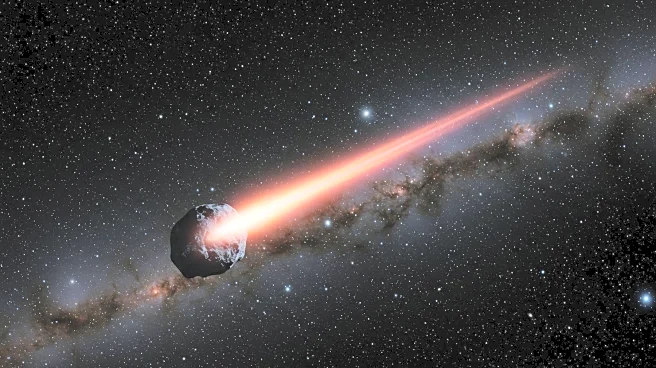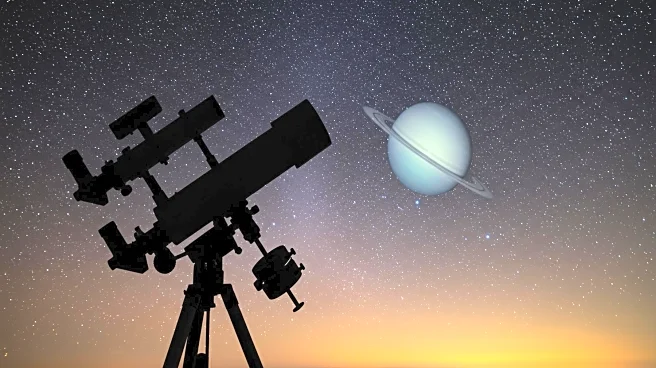Rapid Read • 6 min read
The James Webb Space Telescope has discovered a new moon orbiting Uranus, adding to the planet's known moons. The moon, designated S/2025 U1, was identified by the Southwest Research Institute using Webb's Near-Infrared Camera. It is a small moon, approximately six miles in diameter, and orbits closer to Uranus than its other moons. This discovery was not observed by Voyager 2 during its flyby decades ago, highlighting Webb's advanced capabilities in detecting faint celestial objects.
AD
The discovery of Uranus' new moon provides insights into the planet's satellite system and its formation. Understanding the dynamics of these moons can offer clues about the planet's history and the processes that govern satellite formation. The finding underscores the James Webb Space Telescope's role in advancing our knowledge of the outer solar system and its ability to detect distant objects that were previously beyond the reach of other observatories.
The newly discovered moon will undergo further study and may receive an official name from the International Astronomical Union. Continued observations using Webb's instruments are expected to reveal more about Uranus' satellite system and its formation. This discovery highlights the importance of ongoing space exploration and the potential for future findings that could reshape our understanding of the solar system.
AD
More Stories You Might Enjoy
